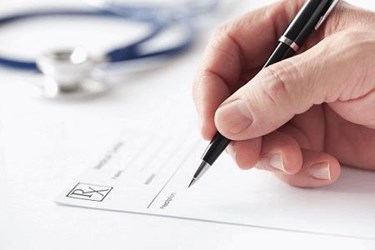Interchangeability: Have Biosimilar Makers Been Set Up To Fail?

By Anna Rose Welch, Editorial & Community Director, Advancing RNA

Last week, the Journal of Managed Care & Specialty Pharmacy (JMCP) published research revealing current pharmacist perceptions on biosimilar naming. The title of this report, Biosimilar Naming Conventions: Pharmacist Perceptions And Impact On Confidence In Dispensing Biologics, clearly sums up the objective of the study. Many on the manufacturing side have expressed concern that adding a suffix to a biosimilar name would make pharmacists less willing to substitute interchangeable biosimilars at the pharmacy. Overall, while pharmacists support the use of a suffix in a biosimilar name, data from this study also reveals naming can impact pharmacists’ comfort giving out interchangeable biosimilars. A number of media resources have leapt on the findings of this study as indicative of a potential danger the naming system alone could cause. But I feel as though these results speak to a greater issue with interchangeability that is worth examining a little more closely.
Where Do Pharmacists Stand On Biosimilar Naming?
According to the survey of 781 members of the Academy of Managed Care Pharmacy and the Hematology/Oncology Pharmacy Association, 48 percent of pharmacists support using a nonproprietary base name or the chemical name (e.g., infliximab) with a “distinct” suffix. (This is in line with the current FDA draft guidance.) In second place, garnering 26 percent of respondents, was the nonproprietary name without a suffix.
However, when asked to rate their comfort in prescribing an interchangeable biosimilar with a suffix in its name, pharmacists changed their tune. Sixty-three percent of pharmacists were more comfortable prescribing an interchangeable biosimilar when it shared the same chemical name as the originator (no suffix). Fifty-seven percent (a 6 percent difference) said they would be more confident prescribing an interchangeable biosimilar with a name containing a suffix.
As far as I’m aware, there has been no discussion about changing the naming strategy for biosimilars approved as interchangeable. But the fact surveyed pharmacists would be more comfortable with biosimilar substitution if they were named like small molecule generics pinpoints a bigger issue.
What Comes From Ranking Biosimilars?
In light of the recent Olympic Games in Rio, I'd like to demonstrate this bigger issue with an imaginary scenario involving medals. Imagine the two different biosimilar “types” (interchangeable and non-interchangeable), if you will, as winners in a medal ceremony. If we consider pharmacists' greater comfort in prescribing an interchangeable biosimilar without a suffix, it would seem that an interchangeable biosimilar would be on the gold medal podium, while the non-interchangeable biosimilar (stuck with its differentiating suffix) would be on the silver medal podium. Obviously, to win either of these medals at the Olympics is a dream come true. But these medals ultimately suggest slight differences in the quality of athletic performances.
This is what’s concerning to me about making interchangeability a regulatory process. Neither the “gold biosimilar” nor the “silver biosimilar” will have been subject to less stringent reviews from the FDA, nor will they be held to different standards of quality. But when faced with an interchangeable biosimilar and an approved biosimilar, doctors and patients may assume the non-interchangeable product is less similar, and therefore, less effective than the interchangeable biosimilar — even though this is not the case.
A partner from Goodwin Proctor’s IP litigation group told Regulatory Affairs Professionals Society (RAPS) he expects interchangeability will be demonstrated via a “high-powered study.” But what does this mean? More work in the clinical space in the conditions that would typically be extrapolated? Perhaps these applications will require extensive switching studies along the same scale as the NOR-SWITCH study. Either way, this suggests the end of the abbreviated pathway for biosimilars. Perhaps more analytical work could be expected, but wouldn’t this suggest that the data for an already-approved biosimilar was lacking something?
It’s perhaps important to note the U.S. and Australia are the only two countries taking a clear regulatory stance on interchangeability to date. Last year, Australia became the first nation to recommend “A-flagging,” or pharmacy substitution. The European Medicines Agency (EMA) has not taken a stance on interchangeability, but EU countries encouraging switching have found biosimilars to be as safe and effective as a biologic.
In the biologics space, the industry is well familiar with the concept that no two batches of a biologic or biosimilar will be exactly the same. The 63 percent of pharmacists who felt an interchangeable biosimilar would be better labeled with just the nonproprietary name, like identical small molecule generics, spoke to the seeming superiority of interchangeables. But as all stakeholders wait with bated breath for how a candidate can “meet additional standards” in the U.S., I’m left wondering if the regulatory concept of interchangeability isn’t just an ideal drugmakers can’t truly attain.
